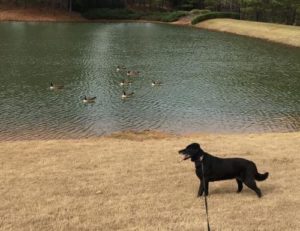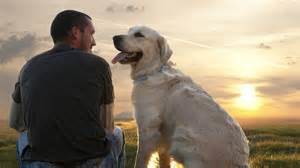The best labrador colour is a controversial and much discussed subject. While the shoot fraternity favour blacks, judges like the yellows and current trends are bringing back fox-reds. And are chocolate labs really as untrainable as some handlers claim? David Tomlinson investigates.
Regardless of what the best labrador colour is, labs are the most popular breed in the world. Ben Fogle celebrates our favourite four-legged friend, read Ben Fogle: our love of labradors.
BEST LABRADOR COLOUR
We all know the saying that a good horse can’t be a bad colour, but few people agree that the same principle applies to labradors. When it comes to the best labrador colour, the general rule among the shooting fraternity is that black is good, yellow acceptable, but chocolate is strictly for the show bench. Black has always been the dominant colour in the shooting field and in trials. A telling statistic in The Best of the Best, a history of the IGL retriever championship, is that in the period 1909-2011, 1,790 black labradors qualified to run, compared to just 367 yellows.
image: https://keyassets.timeincuk.net/inspirewp/live/wp-content/uploads/sites/3/2016/04/Best-labrador-colour.-Yellow.jpg

Popularity of yellows labs was boosted in 1924 by the foundation of the Yellow Labrador Club.
In the beginning, which with the labrador means the later years of the 19th century, all labradors were black. The first two yellow puppies appeared in a litter bred by Captain (later Major) CE Radcliffe in 1902. One was a dog called Ben, the other a bitch. It is generally believed that all yellow labradors are descended from Ben and his son Neptune. There are no colour photographs of Ben but the few surviving black-and-white shots depict a dark-furred dog, suggesting that he was what we now call fox-red. I can find no record of when the first yellow labradors made their debut in the shooting field but they were first exhibited in the show ring at Olympia in 1913.
Yellow soon became popular as the best labrador colour, boosted in 1924 by the foundation of the Yellow Labrador Club. The Club remains active nearly a century later. It was formed to encourage the breeding of pure-yellow labrador retrievers and to conserve the best type of working dog, principles it remains faithful to today. It still holds a novice, an all-aged and an open-qualifying stake each year, with its trials reserved exclusively for yellows. Discrimination on the grounds of colour remains acceptable in the world of dogs, at least with labradors.
BEST LABRADOR COLOUR: CURRENT COLOUR TRENDS
Quite what the founding members of the Yellow Labrador Club would have made of the current fashion for pale-lemon labradors is another matter. Show enthusiasts are rarely satisfied with what they have, and always want to change and improve on the best labrador colour, which goes a long way towards explaining why the early fox-red labradors fell from favour as breeders, encouraged by judges, sought to produce paler and paler dogs. In recent years there has been something of a backlash, as traditional fox-red animals have become increasingly popular in the shooting field if not on the bench. The UK breed standard is flexible, allowing the colour to range from light cream to fox-red.
The resurgence in enthusiasm for fox-red dogs as the best labrador colour isn’t surprising. It is, of course, the ideal colour for a wildfowling dog, providing natural camouflage, and is a very acceptable colour for game-shooting, too. In contrast, the pale yellow dogs appear totally out of place in the shooting field – they look best wearing tartan coats while being walked in the park.
image: https://keyassets.timeincuk.net/inspirewp/live/wp-content/uploads/sites/3/2016/04/Best-labrador-colour.-Black.jpg

Black has always been the dominant colour in the shooting field and in trials.
In 1941, Major Radcliffe wrote an article for The Field in which he described a strain of pure white labradors, bred by Mr Austin Mackenzie of Carridale. They were described as very handsome dogs but, perhaps fortunately, this was one variety that never caught on. Equally intriguing are the Hailstone labradors from the Solway. These were black-coated dogs with white spots, a sort of reverse Dalmatian. A keeper even showed one at Crufts, where it gained the approval of Lorna, Countess of Howe, one of the most influential of labrador people between the wars. She qualified no fewer than 24 dogs for the Retriever Championship between 1920 and 1936, and won it three times.
BEST LABRADOR COLOUR: CURIOUS COLOUR STRAINS
So many hundreds of thousands of labradors have been bred since the breed was first recognised in 1903 that it’s not surprising that a number of curious colour varieties have appeared. Black-and-tan dogs are bred occasionally. According to the Kennel Club, Gordon setter blood was introduced to the breed at one time, possibly in the Fifties, which might explain this colour variant.
Most contentious of all the labrador colours is silver, virtually unheard of here but causing controversy in the US, where a number of kennels specialise in breeding silvers.
image: https://keyassets.timeincuk.net/inspirewp/live/wp-content/uploads/sites/3/2016/04/Best-labrador-colour.-Silver.jpg

Silver labradors have been causing waves in America.
The first brown-coated labradors on record were produced in the Buccleuch kennel in 1892. At that time black was the desired colour, so it seems probable that non-black puppies were culled at birth. It wasn’t until the Thirties that brown labs – then called liver – started to be seen more often but they remained a tiny minority until the Sixties, when the first liver-coloured show champion was made up. An astute move was to call them “chocolate”, a name that not only stuck but made them more appealing to the general public.
Though they became increasingly popular in the show ring and as pets, the shooting world generally avoided them, and they acquired an unfortunate reputation for being less intelligent than their black or yellow cousins. I once asked a professional handler if he had ever had a dog that was untrainable. “Yes!” was his emphatic reply. “A chocolate labrador! I sent it back to its owner as soon as I could.”
BEST LABRADOR COLOUR: CHOCOLATE LABS
Genetically there’s no reason for a chocolate to be any less bright than a yellow or a black, but as few chocolates ever made it into the shooting field there was a tendency for many to be less trainable, having had their working instinct bred out of them. For shooting man and labrador enthusiast Ged Leeson this was a challenge. Leeson decided that as the chances of his ever winning the Retriever Championship with a black dog were remote, he would have a go with a chocolate instead.
Most of the trialling community thought that he was mad even to contemplate competing with a chocolate dog but thanks to perseverance, skill and a touch of cussedness, he succeeded in qualifying his dog Pintail Hector of Styleside (Coke) for the 2008 Retriever Championship. He was the first chocolate labrador to run in the Championship.
Leeson’s other ambition was to make Coke the first-ever labrador of his colour to become an FTCh. He narrowly failed. The problem was getting sufficient runs in open trials to gain the second victory that would have given Coke the coveted title; he did manage a second, several thirds and certificates of merits but not that elusive first place.
image: https://keyassets.timeincuk.net/inspirewp/live/wp-content/uploads/sites/3/2016/04/Best-labrador-colour.-Chocolates.jpg

Ged Leeson’s chocolate labradors.
Two years ago I joined Leeson and his team of five chocolate labradors (including 11-year-old Coke) for a day’s picking-up. They performed magnificently. A bitch, Zeta, performed a remarkable retrieve of a hen pheasant totally submerged in a stream. I was impressed.
I suspect that if it weren’t for a touch of colour prejudice among judges, Leeson would have made up his dog to become an FTCh but that is a controversial issue. Few judges have had the chance to assess a chocolate. But the popularity of yellows continues to grow, and the 2010, 2012 and 2014 winners of the Championship were of this colour.
BEST LABRADOR COLOUR: GENETICS
You can still meet handlers who claim that yellow labradors are less trainable than blacks and others who believe that yellow dogs have more brains than blacks. Both theories are, of course, nonsense, as a study of labrador genetics proves. The colour of the coat of a labrador puppy is determined by the genetic make-up inherited from its parents. Though the black gene is dominant, there are nine different labrador genotypes, allowing a number of different possibilities. For example, if you mate two yellow dogs you will get only yellow puppies. Two chocolate dogs can produce yellow puppies, while two black dogs can potentially produce black, chocolate and yellow puppies. It’s a complicated subject.
It’s essential for labrador enthusiasts who breed for a certain colour to have a detailed knowledge of genetics, and to understand the effects of recessive genes. It’s possible to have your dog tested to discover its genotype and thus be able to predict with some accuracy the colour of any progeny. The American company VetGen even offers what it calls a “Coat Color Prediction Service, so you can reveal your dog’s hidden color genes and then optimise your ability to breed the colors you want”.
Choice of coat colour really comes down to a matter of preference: we all get on best with what we like most. My enthusiasm for fox-red dogs is simply explained: they are much the best for photography. In contrast, black dogs are a nightmare. There is, of course, one other disadvantage to owning a black dog, for they do tend to look the same. I’ve never forgotten the embarrassment of two friends who took the wrong dogs home after a day’s shooting. They were blissfully unaware until their wives voiced their suspicions.


 We have a celebrity ALR Alum. That’s right, Spruce, now known as Ruby, has her own book and it’s a heartwarming tail about rescue that you and your kids will enjoy and a portion of the proceeds goes to helping ALR!
We have a celebrity ALR Alum. That’s right, Spruce, now known as Ruby, has her own book and it’s a heartwarming tail about rescue that you and your kids will enjoy and a portion of the proceeds goes to helping ALR!



 The Rainbow Bridge
The Rainbow Bridge
































 Yes its that time again, well, almost!!! Atlanta Lab Rescue is looking to make our 2nd Annual 5K Race amazing and we can’t do it without you!! Join us SUNDAY NOVEMBER 20th, 2016!!
Yes its that time again, well, almost!!! Atlanta Lab Rescue is looking to make our 2nd Annual 5K Race amazing and we can’t do it without you!! Join us SUNDAY NOVEMBER 20th, 2016!!
 Imagine it’s
Imagine it’s 





 This is a great article from I Heart Dogs! Recently ALR has adopted out several puppies and very young Labs. We thought this would be very helpful information! Teaching your puppy or young dog sooner versus later could potentially save its life one day!!!
This is a great article from I Heart Dogs! Recently ALR has adopted out several puppies and very young Labs. We thought this would be very helpful information! Teaching your puppy or young dog sooner versus later could potentially save its life one day!!!












 The results are in and the first annual Atlanta Lab Rescue 5k Race and 1k Fun Run was a great success! Fabulous weather and a great time was had by all! Please
The results are in and the first annual Atlanta Lab Rescue 5k Race and 1k Fun Run was a great success! Fabulous weather and a great time was had by all! Please 







